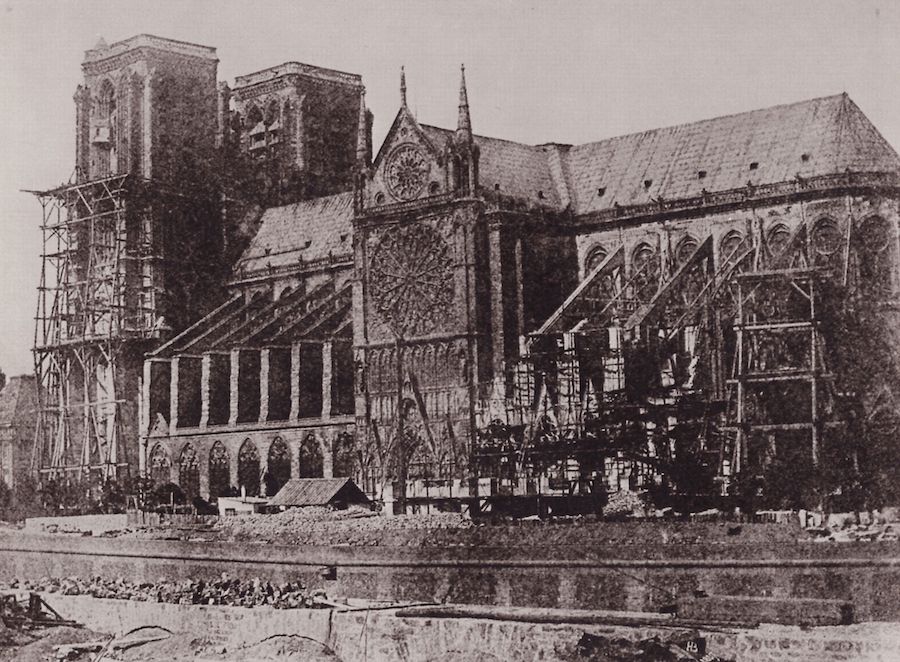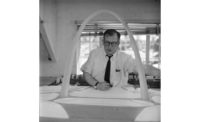The footage of Notre-Dame Cathedral engulfed in flames, on April 15, 2019, felt almost like it was captured in another reality. Watching countless social media feeds and newscasts document the iconic 800-year-old structure teeter on the edge of complete destruction seemed unreal and impossible; a made-for-Hollywood disaster, the likes of which the world hadn’t seen since 9/11.
A year later, as the planet’s population shelters in place to curb the spread of COVID-19, the Notre-Dame conflagration seems a lifetime ago. As many of us adjust to a smaller existence within the confines of our homes, Building Notre Dame, which premieres on PBS April 28 at 8 p.m., affords the opportunity to not only virtually visit the world’s most famous Gothic structure, but go back in time to its creation in the Middle Ages.

Airing as part of the series "Secrets of the Dead," Building Notre Dame is a 55-minute exploration of how the cathedral—with its glorious stained-glass windows and gargoyle-tipped flying buttresses—was built. And while it touches on the 2019 fire in its opening and final moments, the program is more interested in how Notre-Dame became what the narrator calls a “hybrid monument,” and what happened from the laying of the first stone in 1163 by Bishop Maurice de Sully to the wood-heavy 1844 restoration undertaken by architect Eugène Viollet-le-Duc that gave the building it’s iconic shape. The program includes fascinating insights—the intricately-carved western facade was once full of garish color; windows were enlarged then shrunk to meet drainage demands—and breakdowns showing how craftsmen realized elements like the vaunted vaulted ceilings, while exploring how the currents of French history flowed into, out of, and around the building.
The church transformed Paris from a small provincial village into a world capital, yet fell out of, then back into, favor with Parisians. Unsurprisingly, the French Revolution had much to do with the falling out: seen as a symbol of the repressive power structure, revolutionaries tore down massive sculptures and left the cathedral desecrated and endangered. More eye-opening is how Victor Hugo’s 1831 novel The Hunchback of Notre-Dame, set in the 15th century, enabled its resurrection. “If Victor Hugo hadn’t sounded the alarm for the cathedral, if we had let things be, the cathedral would not be standing,” Philippe Villeneuve, Notre-Dame de Paris’ chief architect of historic documents, says in the film.
Along with Villeneuve, our guides are historians from France, Germany, and the U.S.; Ken Follett, author of The Pillars of the Earth; and contemporary artisans who have spent the last 20-plus years reconstructing a cathedral in Burgundy using only those tools and processes that were available to 12th-century workmen. We also get strange computer-generated animation recreating key moments and figures in the cathedral’s history. While valuable to the narrative, the rough quality feels out of place, as if interstitial material from a scrapped The Sims: Middle Ages was ported into the program.
Still, if all you know of Notre-Dame is Hugo’s novel or the many movies it inspired, Building Notre Dame will leave you with a new appreciation for this marvel of engineering, design, and ingenuity. And it inspires hope that this fragile icon will be rebuilt and restored to stand for another 800 years.





Post a comment to this article
Report Abusive Comment